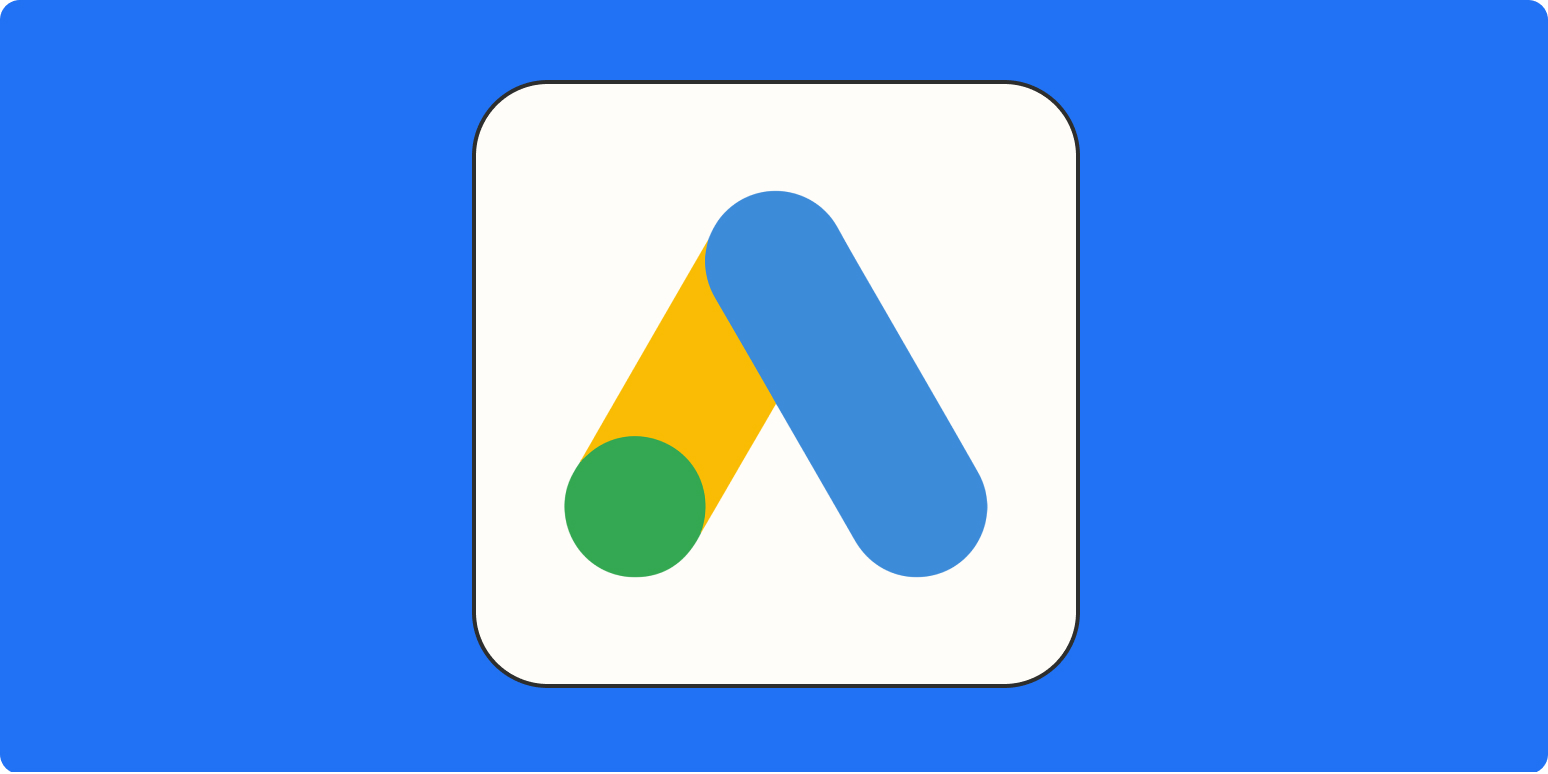Whether you’re a giant retailer willing to spend $50 million a year on advertising or a local plumber looking to expand, Google Ads can help you reach your goals. Unfortunately, Google Ads can get really expensive if your strategy stinks. And over the years, I’ve had dozens of clients ask why their ads aren’t driving revenue.
The truth is, there’s no silver bullet for Google Ads success. That’s why I think the best way to come up with a strategy is to see what other folks are doing. I’ve gathered my favorite Google Ads of late—ones I’ve seen in the wild—and I’ll share how you can steal those same strategies to get high-quality leads and drive conversions.
1. Steal competitor traffic (HoneyBook)
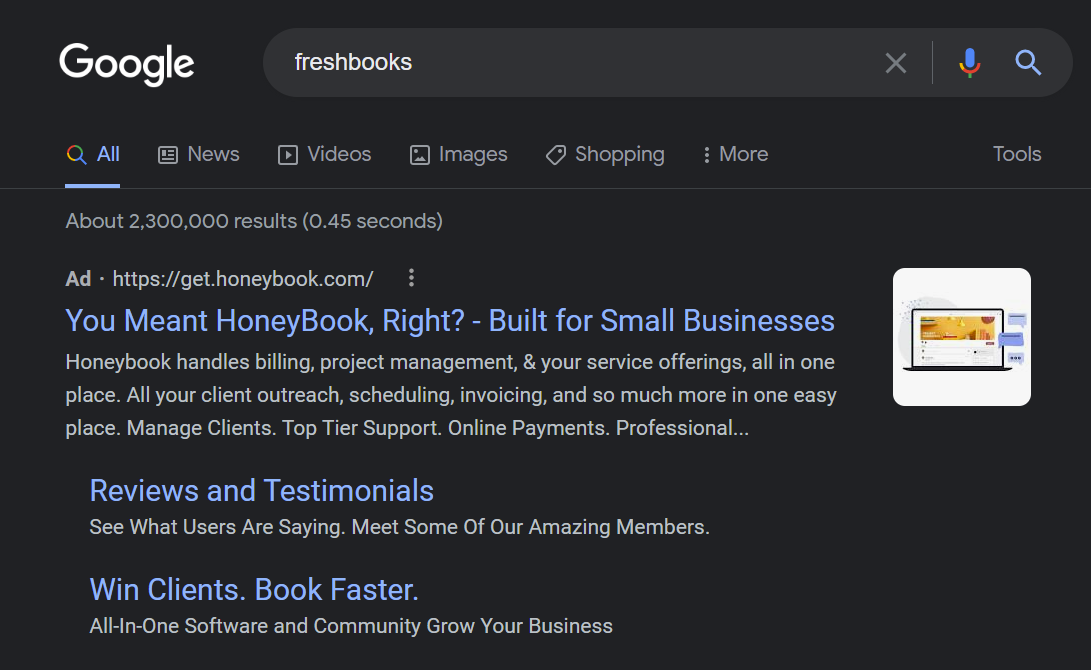
It’s pretty impressive when an ad can make you crack a smile. This is one of my favorite recent Google ad examples. HoneyBooks is bidding on the brand name of its competitor FreshBooks. While that can get a little hairy, this tongue-in-cheek ad really works. It acknowledges that the company is bidding on competitors’ keywords, which shows off their brand personality and definitely takes away any potential ick factor.
The company also uses sitelinks, an automated Google Ads extension that displays links deeper into the site, not just to the main landing page. This takes up more space in the search results (which pushes down the next few ads) and allows HoneyBook to share more about its brand.
Steal this strategy
-
I do recommend caution when bidding on competitors’ names. While no longer banned by Google, it’s still possible to make competitors angry or your audience wary. But it can work, especially if you’re upfront about it, like HoneyBook is here.
-
Optimize for sitelinks using these tips from Google. Remember, you can optimize for sitelinks, but Google decides whether or not they appear in your ads. (You’ll see them in a number of the Google search ads examples here.)
2. Steal back traffic looking for competitors (Semrush)
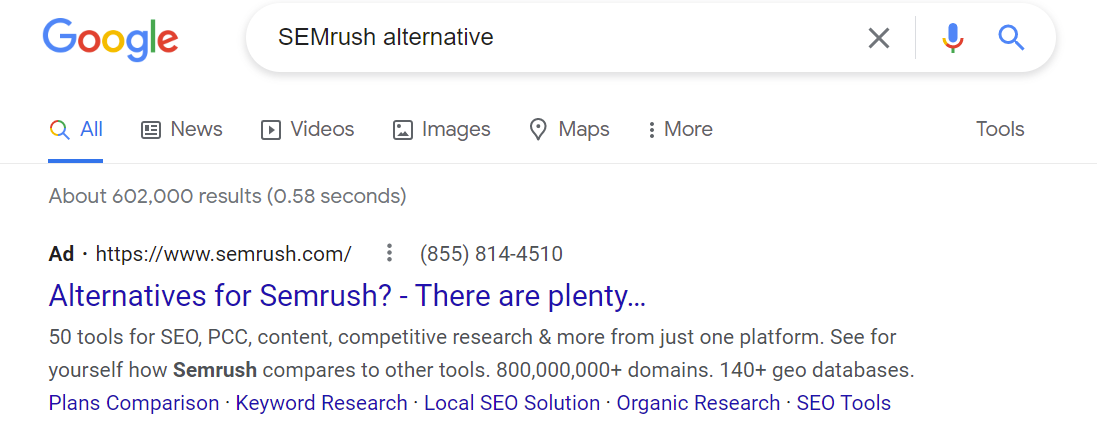
Bidding on keywords like “X alternative” reaches users in the consideration phase of the marketing funnel, which can drive excellent ROI.
Here, Semrush includes “Alternatives for Semrush” in the heading, but the ad itself promotes Semrush’s features, and when you click through to the landing page, it outlines the benefits of choosing Semrush over those alternatives. Essentially they’re saying: “Yes, there are alternatives, but here’s why we’re better.”
Steal this strategy
-
Target high-intent keywords indicating that people are looking for a competitor, such as “[your brand] alternative” or “[your brand] versus [competitor].” You’ll reach buyers who are closer to conversion.
-
Focus ad copy on features that help your brand stand out.
3. Put your best foot forward (Wix)
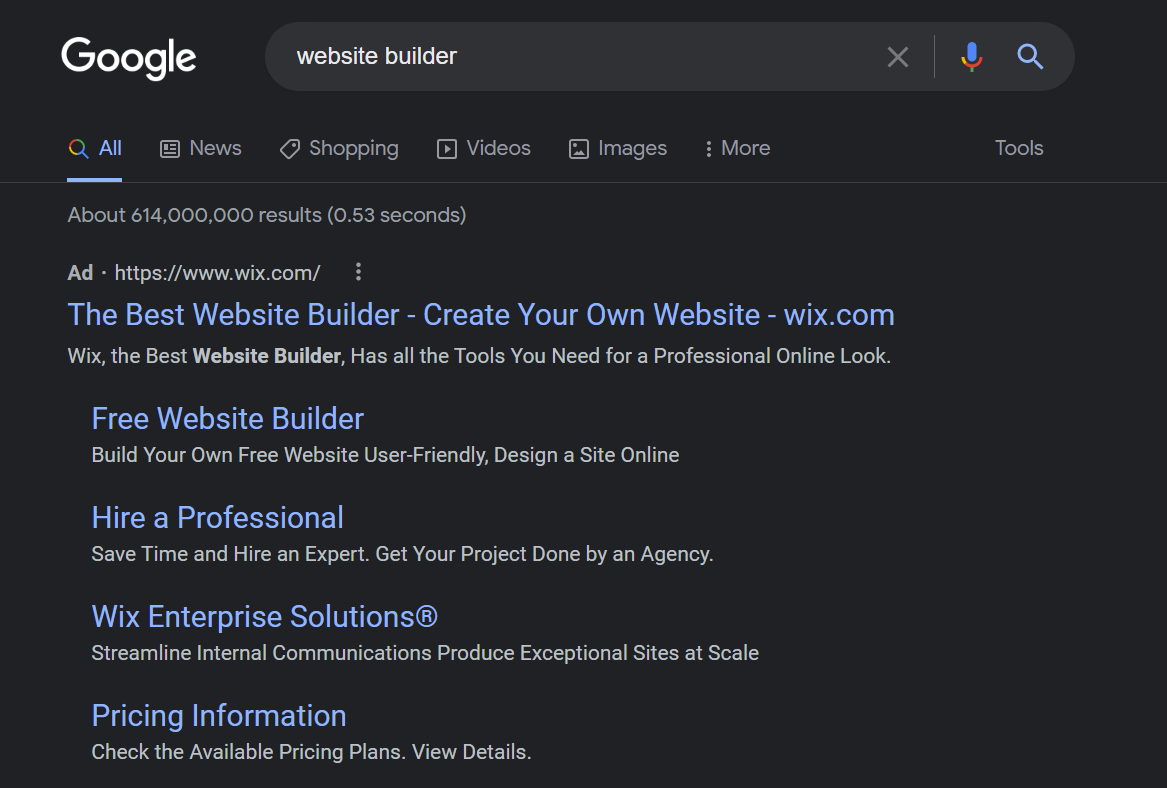
Google Ads isn’t the place to be modest. In this ad, Wix positions itself as an industry leader and targets high-traffic keywords like “best website builder.”
Steal this strategy
4. Include social proof (Botify)

Product reviews are a powerful way to drive clicks and conversions, but you don’t have much room in a Google ad. Here, Botify mentions social proof but keeps the ad short and sweet. “Trusted by the largest brands” gives users enough social proof to create initial trust in the brand. Then the subheading focuses on benefits.
Steal this strategy
-
Mention social proof in your Google Ads, but keep it short. “Trusted by 8,000 companies” or “Used by the biggest brands” is a bit vague, but it shows that users can trust your brand.
-
Follow up by including more specific social proof on the ad landing page.
-
Google’s seller ratings extension adds social proof to your ads in the form of star ratings, so make sure to optimize for them if they fit your brand.
5. Focus on search intent (Plumber Pros)

Think about search intent. For example, when someone searches “plumbers near me,” there’s a good chance they’re in a plumbing emergency. That’s why this ad from Plumber Pros is so effective. It doesn’t just list services, like leaks and drain clearing; the ad focuses on 24/7 availability and same-day service, which searchers likely need.
Steal this strategy
-
There are four main types of search intent: informational, navigational, commercial, and transactional—you want to know which one your keyword is targeting and be sure your ad copy matches folks with that search intent.
6. Offer a discount (Snapfish)
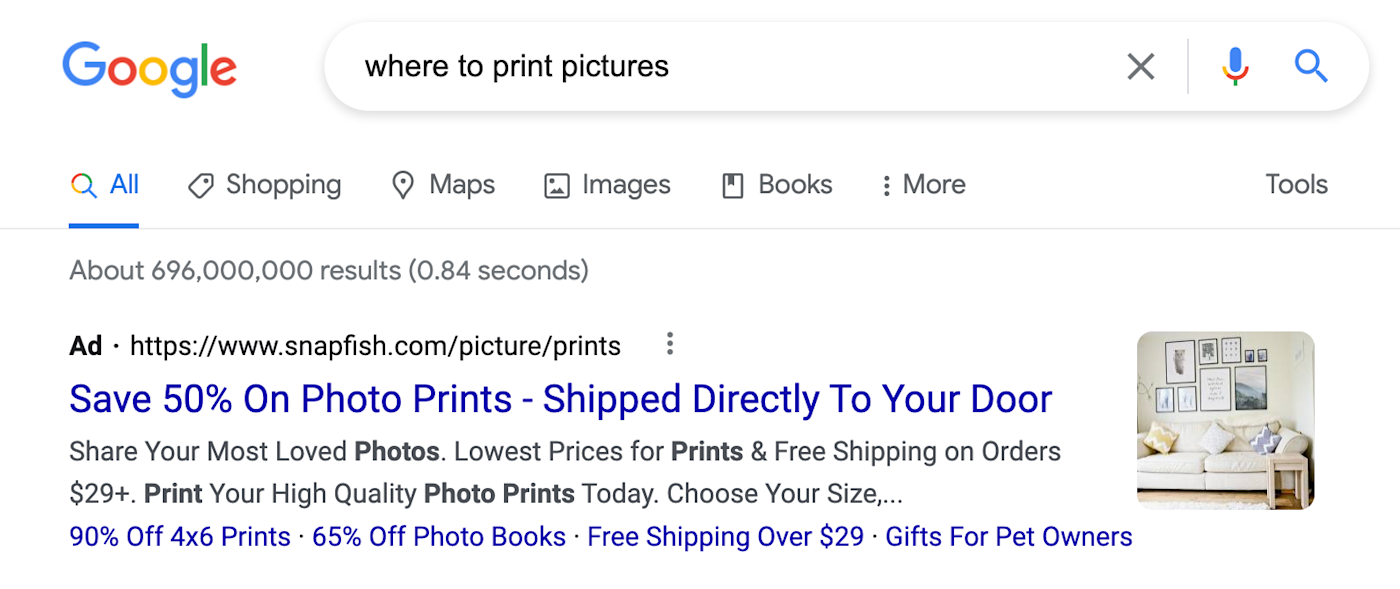
Everyone likes a good discount. This Snapfish ad is eye-catching (anything with “Save X%” is going to attract people) and offers a great deal—several great deals, in fact. Especially if you already offer a discount for first-time buyers, this is a great place to advertise it.
You can make eye-catching advertisements in minutes with an advertisement maker.
Also, note the long-tail keyword they’re targeting: “where to print pictures.” That phrase means the searcher is ready to take action, making the discount even more appealing.
Steal this strategy
7. Address pain points (WP Engine)

WP Engine knows what its target audience is worried about: speed and security. They get ahead of these pain points by addressing them right in the headline. They must also know that their audience is overwhelmed by switching hosts, so the ad offers a guide and promotes a risk-free switch.
Steal this strategy
-
Name your customers’ major pain points, and say how you solve those issues.
-
Read competitor reviews to find major pain points with other brands, and include solutions in your ad copy.
8. Promote free products or services (ClickUp)
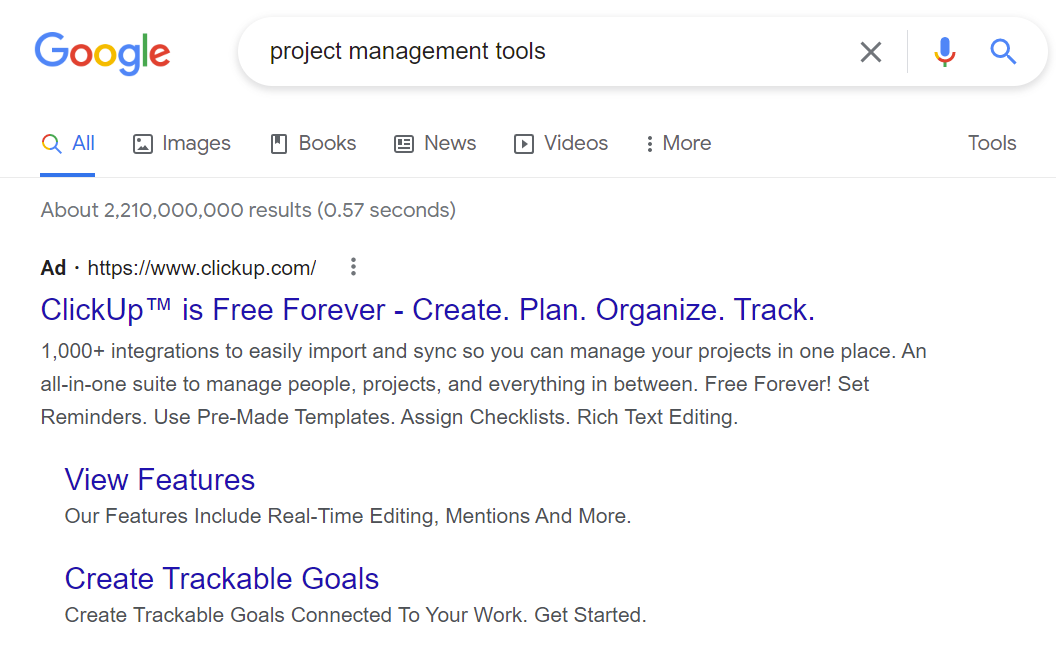
Google Ads aren’t just for conversions—they can also generate high-quality leads. In this example, ClickUp is targeting the keyword “project management tools” to tell users about their free plan. The idea, of course, is to bring users in and upsell them on additional features in their paid plans. The ad also highlights what users will get on the free plan.
Steal this strategy
-
Promote free versions or in-depth, gated content like whitepapers.
-
Use Google Ads’ targeting features to show your ad to carefully defined audiences who might eventually pay for your product or service.
9. Make conversion easy (Morton’s Steakhouse)

This ad from Morton’s Steakhouse is a solid example of a brand understanding search intent. Because they know this is a commercial search intent, they want to make it easy for people to make a reservation. Clicking on the ad takes you directly to the reservation page, and the ad shares other details users might need when booking, such as location, phone number, menu, and hours. The ad does a lot at once, but it manages not to be overcrowded or hard to read (for an ad).
Steal this strategy
-
If you know users who search this keyword are looking to do something specific (in this case, eat steak at a restaurant), make it easy for them to do that thing. Depending on your business, users might want to sign up, see pricing, or book a reservation.
-
Include links to high-demand pages.
Use Google’s recommendations
If you aren’t already, I also suggest using Google’s Recommendations page. This section in the Tools tab of Google Ads Manager is dedicated to helping you build more successful ads. Google recommends features you aren’t using, suggests different keywords, and helps keep your campaigns fresh. Suggestions are based on your historical data, so they can be really useful.
And here are a few more Google Ads tips:
[adsanity_group align=’alignnone’ num_ads=1 num_columns=1 group_ids=’15192′]
Need Any Technology Assistance? Call Pursho @ 0731-6725516

